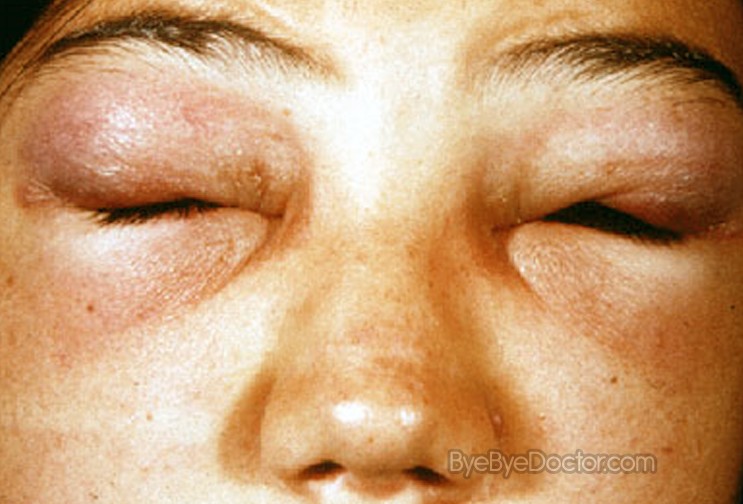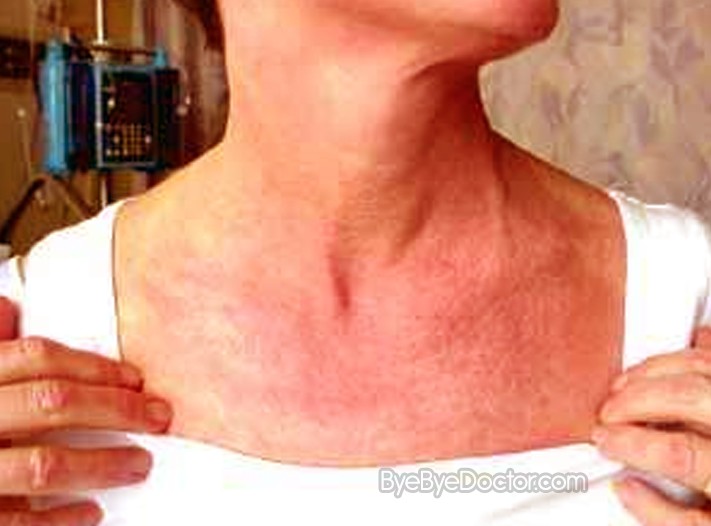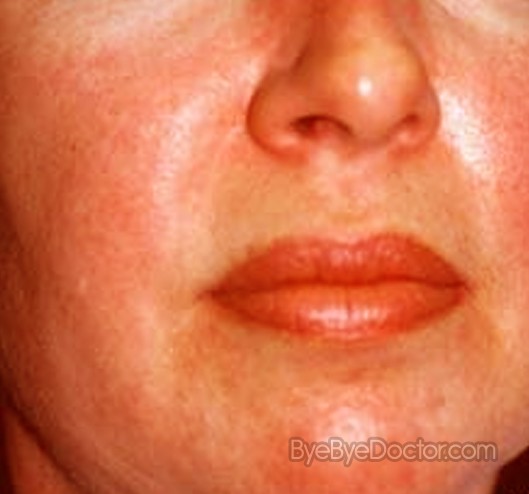What is Dermatomyositis?
Dermatomyositis is an inflammatory disease of the muscles, characterized by a skin rash and muscle inflammation followed by muscle weakness. It is also considered an autoimmune disease, because the disorder results from the body’s immune system attacking it’s own tissues. It is related to other inflammatory myopathies, such as polymyositis, and usually affects individuals aged 40-60, with women being affected more often than men. There is a specialized formed of this condition called juvenile dermatomyositis, which only affects children aged 5-15.
Dermatomyositis Symptoms
Rash and muscle weakness are the most common symptoms, but individuals may experience any or all of the other symptoms related to the disorder. Children suffering from the juvenile form of the disorder are more likely to experience a greater variety of symptoms, particularly the calcium nodules in the muscles and lung disease caused by the disorder. Symptoms of dermatomyositis include the following list:
- Dark red or purplish rash on the skin, that may be painful or itchy (especially on scalp), and occurs most frequently on the face, chest, back, around fingernail beds, and over joints in the body.
- “Gottron’s sign” is a scaly, red rash, appearing similar to psoriasis, that occurs over the knuckles and around the fingernail beds of both hands, and is a clinical indication of the disorder.
- “Shawl sign” is a flat, red, V-shaped rash that occurs over the back or chest and usually worsens with exposure to light.
- Generalized muscle weakness, and pain often described as similar to muscle exhaustion, is very common.
- Dysphagia, or difficulty swallowing, is also present in about one-third of cases.
- Weight loss (due to dysphagia), fatigue, and fever.
- Hard lumps under the skin caused by calcium deposits (most common in form).
- Lung disease (most common in juvenile form).
Dermatomyositis Causes
The exact cause of dermatomyositis is still unknown, however studies have revealed there are some trends in individuals diagnosed with the disorder. It appears that individuals have a genetic predisposition to the disorder, and that it may be triggered by certain occurrences. A list of these common occurrences is listed below:
- Previous diagnosis of Epstein-Barr virus or infectious mononucleosis.
- Diagnosis of another autoimmune disease, such as lupus, scleroderma, Sjogren’s Syndrome, or vasculitis.
- Diagnosis with certain cancers, such as chronic myelogenous leukemia (CML) or HIV and/or AIDS.
- Family history of autoimmune disorders.
- Use of certain drugs, including statins (cholesterol medications), hydroxyurea, quinidine, penicillamine, and phenylbutazone.
Dermatomyositis Diagnosis
If the physician suspects dermatomyositis, there are a series of tests that can be performed to determine diagnosis. Testing is usually performed with the least invasive tests firsts, such a blood work, but the physician may choose to perform any or all the tests. A listing of the most common tests follows below:
Blood tests
- ANA (antinuclear antibody) is often abnormal with any autoimmune disorder. CPK (creatine phosphokinase) is abnormal with any condition causing damage to the muscles. Both of these tests are usually abnormal with dermatomyositis.
- MSAs (myositis-specific antibodies) may be tested by the physician, although these results are generally more helpful after a diagnosis has been made.
EMG
EMG (electromyography) applies electrical impulses to muscles and measures whether the reaction is normal or abnormal. This is a common test in diagnosing this disorder.
X-ray
X-rays may be helpful in cases involving calcium nodules in the muscles, or when lung disease is suspected. CT scans or MRI may also be performed when a physician needs a clearer image of these results.
http://www.Symptoms-Causes-treatment.blogspot.com detect diseases at an early stage symptoms, and find out the causes and treatments best suited.
MRI
MRI may be performed in addition to, or instead of, an EMG to determine the extent of muscle damage and to rule out other muscular disorders.
Skin and/or Muscle Biopsies
Skin and/or muscle biopsies are the definitive diagnostic tool for this disorder. The results are examined by a pathologist who will look for the two classic indications of the disorder: muscle cell atrophy (damage) and infiltration of muscle cells by white blood cells (autoimmune component of disorder).
Dermatomyositis Treatment
There is no cure for dermatomyositis, but there are a number of medications that can be used to treat and reduce the symptoms of the disorder. A physician will prescribe the appropriate medications based on indications and symptoms of the disorder. Some of the most common medications used to treat this disorder are listed below:
- Corticosteroids, such as prednisone, suppress the immune system and are often the first medications given to treat the disorder, because they rapidly decrease inflammation. However, they have multiple side effects and are not recommended for long-term use.
- Corticosteroid alternatives, such as methotrexate or azathioprine, do not have as many side effects, and may be used for long-term treatments.
- Immunosuppressants, such as Cytoxan (cyclophosphamide) or Sandimmune (cyclosporine), can also be given to suppress the immune system and reduce symptoms of the disorder.
- Antimalarial agents, such as Plaquenil (hydroxychloroquine) or Aralen (chloroquine), can be used to treat persistent rash.
- When other treatments are not effective, intravenous immunoglobulin (blood product consisting of healthy antibodies) may be helpful.
- Recent studies have shown that Rituxan (rituximab), a drug that reduces a certain kind of white blood cell call B-lymphocytes, is a viable treatment for the disorder.
There are other treatment measures that do not directly affect the cause of the disease, but may reduce the symptoms and make the individual more comfortable and able to function at the highest level possible.
- Over-the-counter pain relievers and anti-inflammatory drugs, such as Advil (ibuprofen) or Tylenol (acetaminophen), can reduce the pain and swelling associated with the disorder. In cases of moderate to severe pain, the physician may opt to prescribe a stronger pain medication.
- Physical therapy can help maintain some muscle strength and decrease the muscle atrophy associated with the disorder.
- Speech therapy is often recommended for individuals with dysphagia, or difficulty swallowing, related to the disorder.
- Nutritional consults with a dietician may be helpful for individuals with weight loss or dysphagia, to make sure all nutritional needs are met.
- Sunscreen and protective clothing should be used for rashes, as sunlight can make them worse.
- Getting plenty of rest is very important, particularly during times of muscle weakness.
Dermatomyositis Pictures



